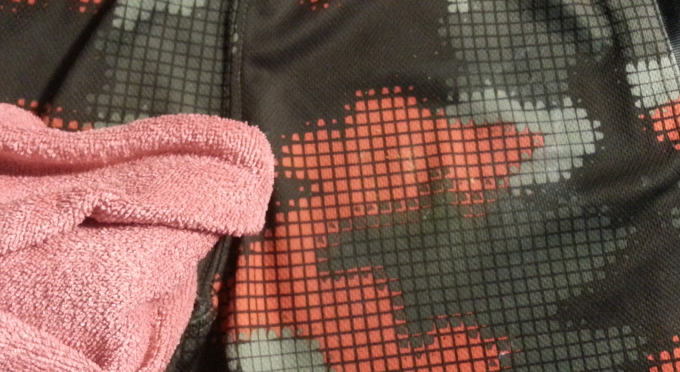

Use the removable shower head (if your shower has one) or a small bucket to thoroughly rinse the shower. Step 3: Scrub Up (and Down)ĭip a nylon-bristled scrub brush into the paste and vigorously scrub your shower tiles, paying special attention to the grout between the tiles. Mix ½ cup of baking soda with 1 tablespoon of dishwashing liquid and add small amounts of water to the mixture until it forms a runny paste. To protect yourself from unnecessary exposure to the Serratia marcescens shower bacteria, wear a pair of protective glasses and rubber gloves during your cleaning. To Scrub Down: Step 1: Suit Up in Protective Gear This gets rid of the underlying minerals and soap scum that the bacteria love to feed on.

However, to provide a longer-lasting effect, the area will need to be scrubbed down. Spraying a diluted solution of bleach will kill the bacteria and lighten the pink stain.
#How to get putty out of your shower how to
How to Get Rid of Pink Bacteria in Showerĭespite "pink shower mold" not being the most hazardous microbe out there, it is still in your best interest to remove it as soon as you see buildup beginning to form.

Pink shower mold usually appears as a slimy build-up, though it does not always appear to be specifically pink. Serratia marcescens is commonly referred to as “pink mold” or “pink mildew” but it is bacteria causing those irritating pink stains in the bathtub and on your shower head. The pink colour is from a pigment (prodigiosin) produced by Serratia marcescens under the right growing conditions. This pink mold you've found growing on your shower curtain, or in your toilet is not actually mold at all in fact, it's a Gram-negative bacteria that is scientifically known as Serratia marcescens. Pink Mold in the Shower: How to Get Rid of Itĭid you just perform a search for "pink mold in shower", "pink shower mold" or "pink mold shower"? Learn more about that pesky pink residue in your shower and how to get rid of it with our tips for removal and prevention.


 0 kommentar(er)
0 kommentar(er)
